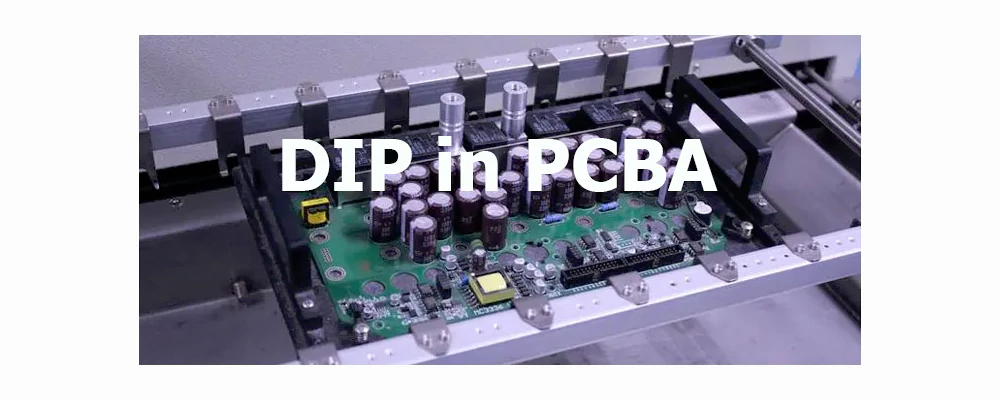In the field of PCBA, DIP is an indispensable and important link. With the continuous development of the electronic manufacturing industry, DIP technology is also constantly upgraded and improved, providing a more efficient and reliable solution for PCBA production.
This article will introduce in detail the application of DIP in the PCBA field, and analyze its impact on production efficiency and product quality.
Overview of DIP

DIP refers to the process of inserting DIP packaged components into corresponding holes on the PCB board and achieving electrical connections through welding and other methods.
This processing method has the advantages of simple operation, low cost, and high reliability, so it has been widely used in the field of PCBA.
Application of DIP in PCBA
1. Component preparation
Before processing the DIP plug-in, the corresponding DIP components need to be prepared according to the production plan and product BOM (bill of materials).
These components need to undergo strict inspection and screening to ensure that their performance and quality meet the design requirements. At the same time, the component pins also need to be properly pre-processed, such as removing oxide layers, tin dipping, etc., to facilitate subsequent plug-in and welding operations.
2. PCB board positioning and plug-in
Fix the PCB board on the plug-in machine and adjust the parameters of the plug-in machine to ensure that the components can be accurately inserted into the corresponding holes on the PCB board.
During the plug-in process, you need to pay attention to the direction and polarity of components and the corresponding relationship between pins and holes.
After the plug-in is completed, first article inspection is required to ensure the accuracy and quality of the plug-in.
3. Welding and fixing
After completing the plug-in, the component pins need to be soldered to achieve electrical connections.
In the PCBA field, the commonly used soldering methods are wave soldering and reflow soldering. Wave soldering is suitable for soldering through-hole components, while reflow soldering is suitable for surface mount components. For DIP plug-in processing, wave soldering is usually used.
The wave soldering machine sprays molten solder through the nozzle in the form of wave peaks to the component pins on the PCB board, so that the pins are in close contact with the pads on the PCB board and soldered.
During the welding process, parameters such as solder temperature, wave peak height, and transmission speed need to be controlled to ensure welding quality. At the same time, the soldered PCB board also needs to be cleaned and dried to remove flux residue and other contaminants on the surface.
4. Quality inspection and maintenance
After completing the welding, the PCB board needs to be inspected for quality to ensure that all components are installed correctly and welded well.
Commonly used inspection methods include visual inspection, AOI (automated optical inspection) and X-ray inspection. Detected defective products need to be repaired or reworked to ensure product quality.
The impact of DIP on PCBA production
1. Improve production efficiency
The use of DIP can greatly improve the automation and production efficiency of PCBA production.
Through reasonable process design and equipment selection, fast, accurate insertion and efficient welding of DIP components can be achieved, thereby shortening the production cycle and reducing costs.
2. Ensure product quality
Strict quality control during DIP can ensure the quality stability and reliability of PCBA products.
All aspects from component preparation to plug-ins, welding and quality inspection need to be strictly checked and controlled to ensure that the performance and quality of the final product meet the design requirements.
3. Adapt to diversified production needs
DIP technology has high flexibility and configurability, and can adapt to the processing needs of DIP components of different specifications and different packaging forms.
At the same time, by cooperating with other production equipment, the diversified and personalized needs of PCBA production can be realized to meet the customized requirements of customers.
Conclusion
In short, DIP has broad application prospects and important value in the PCBA field. By understanding and mastering the process flow and technical points of DIP, it can be better applied in actual production to improve production efficiency and product quality, reduce production costs, and enhance corporate competitiveness.










